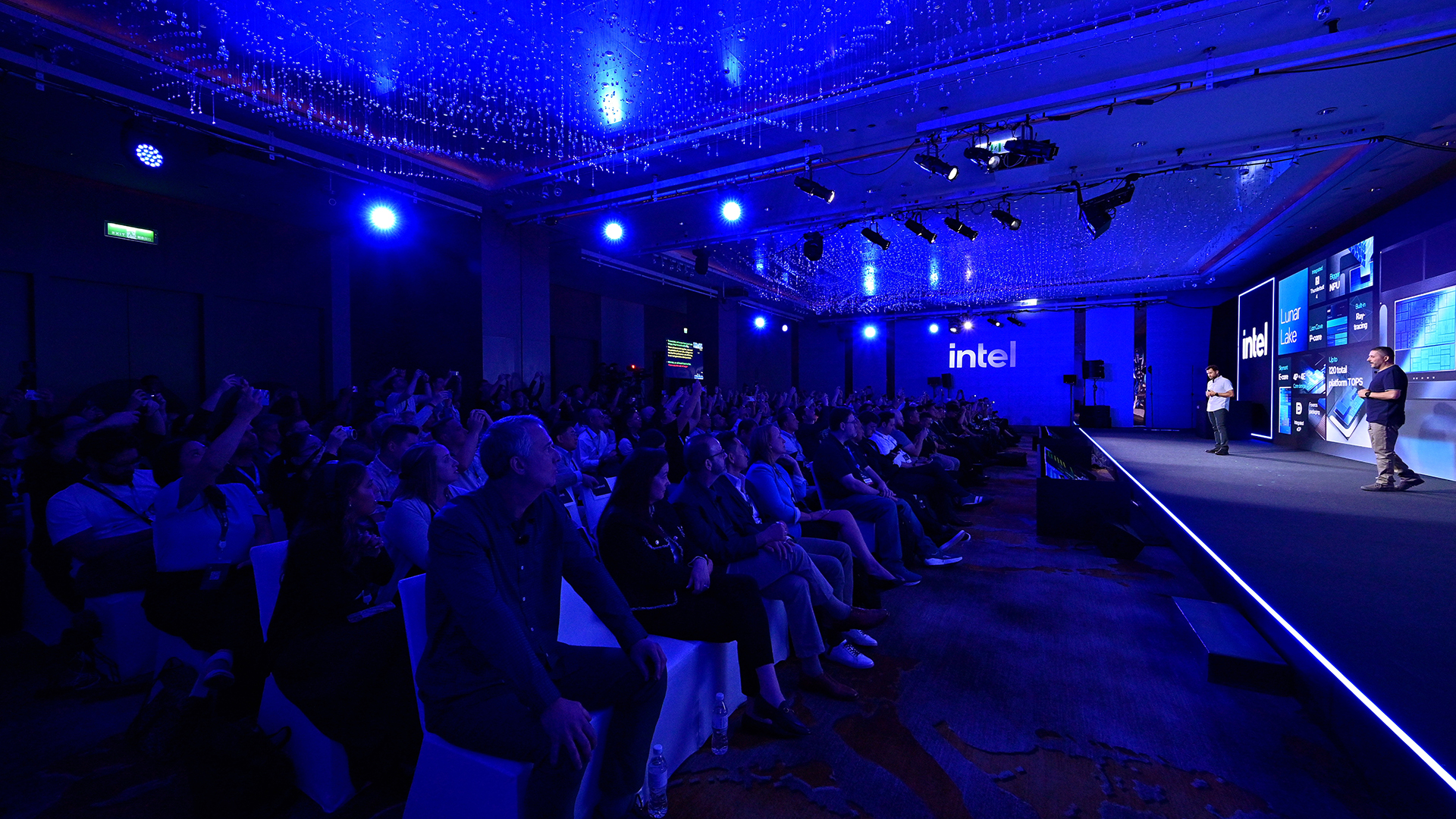Intel invests in open-source RISC-V processors, creates billion-dollar fund
Intel and RISC-V working together is a game-changer, and today is the day that RISC-V becomes a chip power.

www.zdnet.com
Intel, which has made billions from its closed-source, complex instruction set computer (CISC) x86 processors, is joining forces with RISC-V, the open-source reduced instruction set computer (RISC) CPU group. What next? Dogs and cats living together!?
Reading an article like this makes me realise that Intel is (of course) willing to look outside of its own research labs to find technology worth backing.
Which makes you wonder has Intel considered manufacturing Edge AI devices under license from BrainChip?
Have they even considered it? Well, let's test that...
- Do they know about BrainChip? Of course they do.
- Have they evaluated BrainChip's technology? You would have to guess they have acquired a Chip and all the support bits and torn it apart. I think they would understand it in great detail.
- Have they thought about building an AI device/chip under license? Yeah, they would have to have at least tossed the idea around even if they rejected it. Either that or work out a way to get around the patents (or come up with something different).
Have they spoken with BrainChip and explored this option?
DON'T KNOW
We don't know who the EAP companies are.
We don't know much.
But, what IF?
-----------------
Pure unadulterated speculation.
Very interesting Batman...
In a recent artilce, Gelsinger recently announced Intel Foundry Services, a business that opens up Intel’s fabs to make chips designed by Amazon, Qualcomm and other customers.
Before Intel's recent stumbles, it led the world in advanced chip manufacturing. CEO Pat Gelsinger has a bold new plan to catch up to Samsung and TSMC by 2025.

www.cnbc.com
Intel Foundry Services Launches Accelerator Ecosystem Alliance
SANTA CLARA, Calif., Feb. 7, 2022 — Intel Foundry Services (IFS) today launched Accelerator, a comprehensive ecosystem alliance designed to help foundry customers smoothly bring their silicon products from idea to […]

www.hpcwire.com
February 7, 2022
SANTA CLARA, Calif., Feb. 7, 2022 — Intel Foundry Services (IFS) today launched Accelerator, a comprehensive ecosystem alliance designed to help foundry customers smoothly bring their silicon products from idea to implementation. Through deep collaboration with a group of industry-leading companies across electronic design automation (EDA), intellectual property (IP) and design services, IFS Accelerator taps the best capabilities available in the industry to help advance customer innovation on Intel’s foundry manufacturing platform.

A photo from November 2021 shows employees in cleanroom “bunny suits” working at Intel’s D1X factory in Hillsboro, Oregon. A D1X fab expansion due for completion in 2022 will help meet a sharply increasing global demand for semiconductors. Intel’s chip-manufacturing operation in Oregon is the company’s biggest site worldwide. The company’s 21,000 employees in Oregon make Intel the state’s single largest private employer. Credit: Walden Kirsch/Intel
“A vibrant semiconductor design ecosystem is critical to the success of our foundry. We are pleased to launch our ecosystem alliance program with leading design companies that will play a vital role in accelerating our foundry customers’ success,” said Pat Gelsinger, Intel CEO.
IFS launched Accelerator’s preliminary phase in September 2021 to help automotive chip designers transition to more advanced process technologies by offering both custom and industry-standard intellectual property. With today’s comprehensive launch of the IFS Accelerator – including 17 founding partner companies – the ecosystem alliance is enhanced with full support from electronic design automation and design services providers, as well as a broad library of IP offerings from a range of partners.
The IFS Accelerator provides a comprehensive suite of tools for customers:
- The most powerful and validated EDA solutions optimized for Intel’s leadership technology and manufacturing, covering the full spectrum from concept to high-volume silicon production.
- A comprehensive, silicon-verified, and Intel process-specific IP portfolio, including standard cell libraries, embedded memories, general purpose I/Os, analog IP and interface IP.
- Design services partners that allow customers to focus on creating unique product ideas, assigning implementation tasks to rigorously trained designers well-versed on Intel technology.
These three capabilities are the foundation of customer interaction with a foundry manufacturing partner. EDA suppliers produce tools that assist in the specification, planning, design, verification, implementation and testing of electronic systems. Collaborating closely with EDA partners allows customers to co-optimize and enhance tools and flows so chip designers can best realize their performance, power and area (PPA) goals, while accelerating their time to market.
“Foundry customers need access to design services, IP, and tools and flows to enable their next-generation products in different stages,” said Randhir Thakur, president of Intel Foundry Services. “With the goal of accelerating customer innovation, the IFS Accelerator ecosystem alliance program brings together the brightest minds and the broadest capabilities to deliver a seamless interface with Intel’s process and packaging technologies. We are entering a new era of openness in technology, and Intel is wholeheartedly embracing the idea that innovation thrives in an open and collaborative environment.”
Designing products with integrated and reusable circuit IP blocks has become a significant trend as system-on-chip (SoC) design has grown increasingly complex. IP partners collaborate with IFS to enable designers to access high-quality IP that aligns with their aggressive design and project schedule requirements. The IFS Accelerator IP portfolio includes essential IP blocks needed for modern SoCs – all optimized for IFS technologies.
Designing the next generation of semiconductor products requires skilled engineering talent and resources, especially when working with leading-edge process technologies. Partnering with IFS Accelerator design service providers gives customers options for additional support when bringing their ideas to life, with specialties ranging from analog and digital physical designs to low-level system software. Depending on a customer’s needs, the silicon experts from the alliance partners can assist in different stages, including design, verification, implementation, and emulation.
Leveraging the capabilities of this ecosystem is more important than ever as the demand for semiconductors grows across markets and applications. IFS is making its technology platforms available to these partners to ensure the pace of innovation moves forward at a torrid pace. Read more about Intel’s renewed commitment to openness in Thakur’s editorial, “
Innovation Starts Here: Partnering to Power the Foundry Ecosystem.”
Who’s Involved: The IFS Accelerator features innovative partner companies across each of the three pillars of the program:
- EDA Alliance: Ansys, Cadence, Siemens EDA, Synopsys
- IP Alliance: Alphawave, Analog Bits, Andes, Arm, Cadence, eMemory, M31, SiFive, Silicon Creations, Synopsys, Vidatronic
- Design Services Alliance: Capgemini, Tech Mahindra, Wipro
For more details and supporting quotes from these partners, please see “
Building an Open Ecosystem.”

 www.zdnet.com
www.zdnet.com












